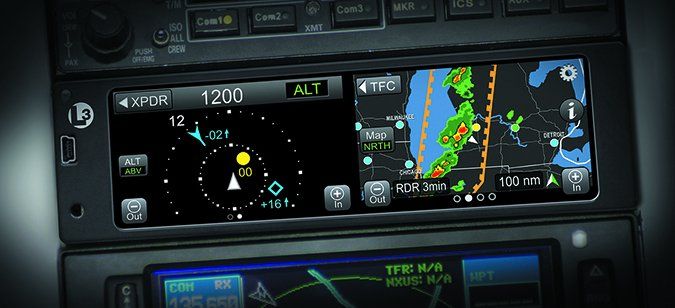With roughly three years until the ADS-B mandate hits, a new breed of multifunction transponders is making equipage easier than ever. But with a market flooded with choices (including lesser equipped first-generation models), the buying decision can be overwhelming.
Moreover, tablet app compatibility and cockpit wireless networking add to the delirium. In this article, we answer your call for an overview of ADS-B-compliant transponders and tips for selecting the right one for your mission and avionics suite.
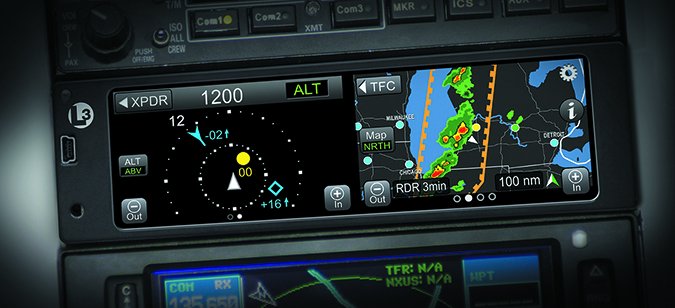
Logical Trend
It’s easy to see why shops are reporting a surge in ADS-B transponder installations and a sharp decline in remote ADS-B systems, known as Universal Access Transceivers or UATs. Transponders are winning the race because of new self-contained features and overall simplicity.
Second-gen models fit a wide variety of applications and their curtailed installation effort reduces downtime and labor costs. Face it, the major teardown that’s required to install a remote ADS-B box and associated wiring can cost as much if not more than the equipment, with some exceptions.
Got a lesser-equipped aircraft without a WAAS GPS or a panel display? Those worries are gone. The latest ADS-B transponders are WAAS equipped (or have options for such), plus they have ADS-B In receivers and have wireless capability for displaying weather and traffic on a tablet. But don’t dive in without planning.
The first step is assessing your mission and the existing avionics in the aircraft. A brief review of the equipage requirements is in order, and you’ve heard it all before. The rules haven’t changed. If you plan to fly above 18,000 feet—where 1090ES extended squitter is a requirement—you’re already qualified for an ADS-B transponder because 978 MHz (or UAT) Out solutions aren’t an option.
If the aircraft has an aging Mode A/C transponder, the decision to upgrade to an ADS-B model is made even easier, since you’ll still need reliable Mode A and Mode C functionality, in addition to ADS-B Out.
But, if you’ve recently upgraded to a modern non-ADS-B transponder, the decision is more difficult and it could make sense to move forward with a UAT system, unless your shop is willing to offer a trade-in allowance for the existing transponder. You could, of course, retain it as a secondary backup—a common scenario. One owner told us that his more discrete non-ADS-B secondary unit is handy for VFR flights when he doesn’t want his whereabouts to appear on internet tracking sites.
Although we’re seeing more cross-brand compatibility thanks to more liberal architectures, mixing brands could sell short an otherwise capable interface. For example, if you’re accustomed to automatic mode and flight timer operation with your current Garmin transponder/navigator setup, installing a non-Garmin ADS-B transponder will likely kill that capability. Consider the possibility that future software upgrades can limit functionality.
Let’s scan the market by manufacturer. We’ve combined some manufacturers, since rebranding is common.





2)]
Appareo
Yes, this is the same company that makes the popular Stratus portable ADS-B receivers sold by Sporty’s. It earned certification for its Stratus ESG ADS-B transponder this summer. When Appareo began developing the ESG, it predicted (based on FAA stats) that NextGen equipage trends would favor 1090ES transponder solutions, especially considering an easier installation and an aging fleet of Mode A/C transponders. But there was another strategy.
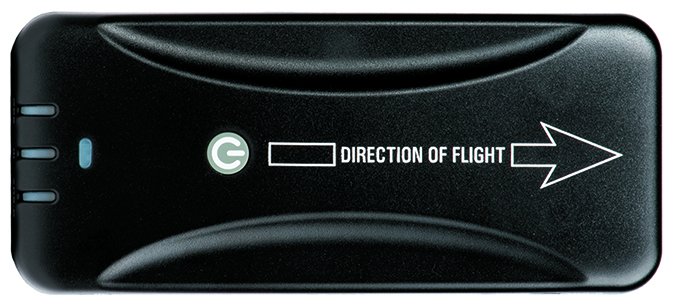

From the beginning, Appareo engineers were sharply focused on federated avionics interfaces, which are radio stacks that might have a variety of avionics brands, both old and new. It also focused on the price-sensitive, lower end of the retrofit market. Many of these targeted buyers likely have Stratus portables, which could boost brand recognition.
The 1090ES-based ESG transponder doesn’t have an internal ADS-B receiver, but it does have internal WAAS GPS, eliminating the need for an external GPS input. Also recognizing that buyers would want a seamless ADS-B In solution, it designed the transponder to interface with a new hard-wired, remote version of the Stratus portable, called the 2i.


Unlike the models in the original Stratus line, the 2i isn’t portable and requires a connection to the electrical bus. The benefit is a cleaner installation—no wires strung across the glareshield, and no windshield mounts to deal with. Mount it behind the panel or anyplace that’s convenient. Connecting the 2i (and also the portable 2S, with an optional interface wiring kit) with the ESG provides auxiliary power, GPS signal and also the ADS-B reception from external antennas.
As with the portable Stratus receivers, the 2i displays traffic, weather and AHARS on the ForeFlight app through a Wi-Fi connection.
Of course, if you want to move the Stratus portable receiver between aircraft, you’ll want the 2S. If not, we favor the 2i’s cleaner interface.
Appareo has two packages: The standalone ESG transponder with installation kit is $2995, and the ESGi (with the 2i receiver) is $3495. You won’t lose any features if you go with 2i over the 2S—just portability. Contact Appareo.com.
Avidyne
Avidyne’s full-stack retrofit avionics line includes the AXP340 transponder, which can be connected with the company’s IFD550/540/440 navigators for a WAAS position source. It’s also approved for use with Garmin’s GNS430W/530W WAAS navigators, plus the newer GTN navigators. The AXP340 has no built-in ADS-B receiver; you have to buy the company’s $2500 MLB100 receiver for that, which will display weather and traffic on the IFD navigators. It will also display on a wide variety of tablet apps, using the IFD’s built-in wireless transceiver.
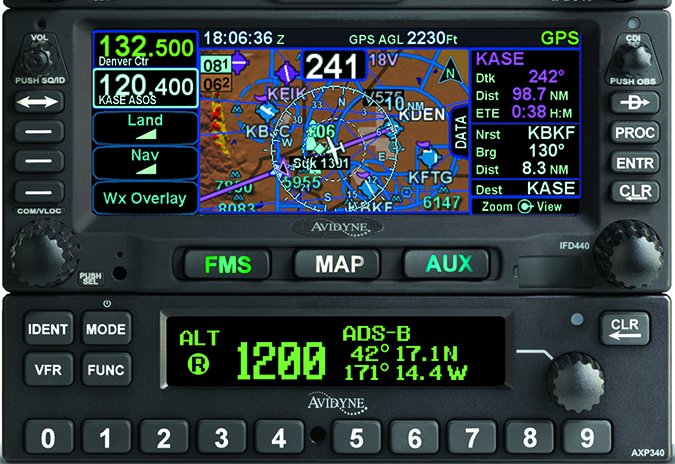

The AXP340 is designed as a slide-in replacement for the Mode A and Mode C functions of the King KT76A transponder, while also using the King’s mounting rack.
We wish the AXP340 was compatible with Garmin’s GTX327 transponder wiring—which was standard in Avidyne Entegra-equipped Cirrus models. With many of these Cirrus owners upgrading from the original equipment GNS430W navigators to the slide-in IFD440, it sure would be convenient to also slide in the AXP340 in place of a GTX327, but that requires a new mounting tray and a wiring change—essentially a new installation.
Avidyne has a remote version of the AXP340 called the AXP322. Priced at $5450, the 1090ES AXP322 is controlled through the IFD navigators—a feature that does target Entegra/Garmin-equipped Cirrus models—because eliminating the transponder from the radio stack frees up space for the larger IFD550/540. Visit Avidyne.com.
Bendixking/ Trig/ FreeFlight
We grouped these brands together because there’s lots of rebranding going on. First BendixKing, which has advanced the KT74 1090ES ADS-B transponder interface to include compatibility with Garmin WAAS navigators (it doesn’t have internal GPS or an ADS-B In receiver), plus it connects with the BendixKing KSN770 retrofit navigator for use as an approved position source.


For ADS-B In, BendixKing sells the KGX series UAT transceivers, which are repurposed FreeFlight RANGR systems. As we go to press, the BendixKing KSN770 navigator still won’t display ADS-B weather and traffic, although BendixKing’s Roger Dykeman said the company is still working through the FAA approval process.
It is Trig Avionics that designed and builds the KT74 for BendixKing, and still offers the rack-mounted TT31 and two-piece TT22/21 1090ES transponders. FreeFlight Systems sells the Trig TT22 as the RANGR FDL 1090 TX.
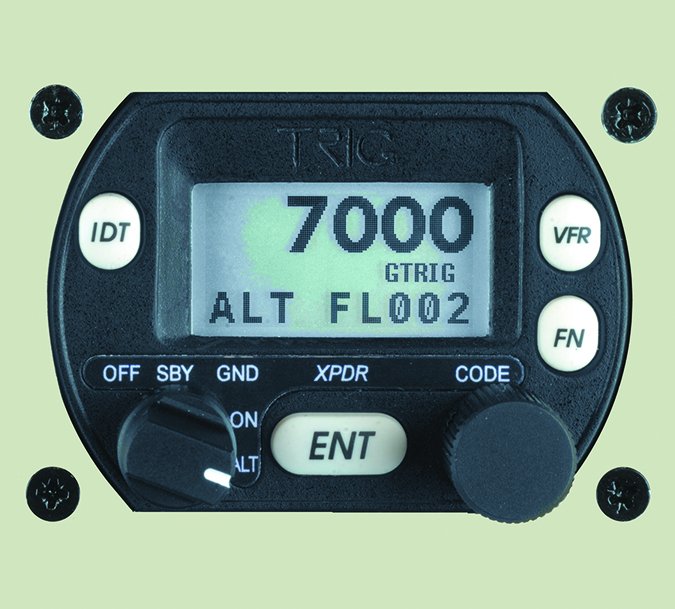

The BendixKing KT74 and Trig TT31 were designed as slide-in replacements for the King KT76A, KT76C and KT78 transponders, but all require the additional wiring for external GPS input. While we’ve always been fond of Trig’s quality and design, we think its current line of first-generation transponders are at a disadvantage without internal GPS, especially with newer-generation models from Garmin, Appareo and L-3, which substantially streamline the interface.
Instead, Trig offers the NexNav remote WAAS GPS receiver, plus external GPS antenna, which is a mandate compliant system priced at $1100. It weighs less than 1 pound and can be mounted pretty much anywhere in the airframe.
FreeFlight has the $3995 model 1201 dedicated external WAAS/GPS sensor for use with the RANGR. The sensor is certified to TSO-C145A as an approved ADS-B position source and connects with the transponder via RS-232. The receiver comes with an antenna and can work in other applications needing WAAS. Visit Bendixking.com, Freeflightsystems.com and Trig-avionics.com.
Garmin
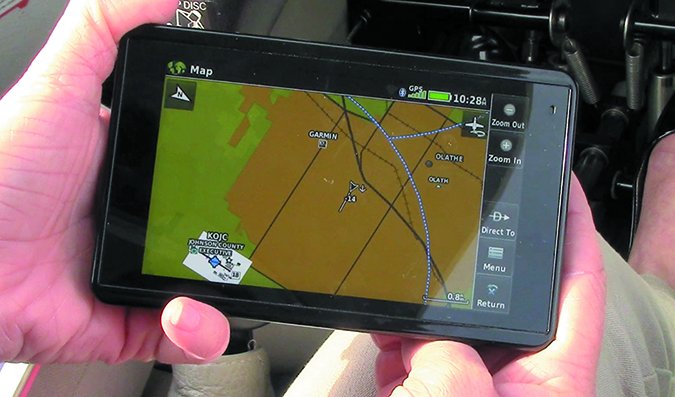

Garmin’s latest GTX transponder product line may seem confusing at first, but that’s actually a good thing because there are a wide variety of configurations to choose from, depending on desired functions.
Worth mentioning is that Garmin’s first ADS-B Out transponder—the GTX330ES—has been discontinued. It was replaced by the $2995 GTX335, an entry-level ADS-B Out model with optional internal WAAS receiver ($3795), not including GPS antenna. Garmin says it will continue to support the GTX330ES and still performs “ES” upgrades to plain-vanilla GTX330 transponders for ADS-B Out. This is a factory modification with a flat-rate cost of $1200.
Like the GTX330ES, the GTX335 doesn’t have an ADS-B In receiver. You’ll need to step up to the GTX345 for that—an upgrade we think makes sense for a lot of applications, especially for future growth.





0)]





1)]
Starting at $4995, the GTX345 has a built-in Bluetooth transceiver for displaying ADS-B weather and traffic on the aera 660/GPS696/796 portable navigators, Garmin’s Pilot tablet app for Apple and Android devices, plus it works on ForeFlight Mobile. A version with internal WAAS GPS is available for $5795, not including antenna, which is priced at $350. These ADS-B transponders are also available in remote versions, for interfacing with the GTN750 retrofit navigator and with select G1000 systems when approved by the aircraft OEM.
The GTX345 with internal ADS-B In (these are dual-band receivers) interface with the GTN750/650. You get traffic and weather display, including Garmin’s Trend Vector traffic mapping technology. You’ll get basic traffic display (no ADS-B symbology), plus NEXRAD images, METARs and TAFs on GNS530W/430W navigators. The transponders won’t display on legacy (non-WAAS) GNS navigators. These are simply out of horsepower. Visit Garmin.com.
L-3 NGT-9000
L-3 doesn’t like to call the Lynx NGT-9000 a transponder, even though it is technically a Mode S Class A1/A1S transponder. Perhaps “multifunction ADS-B system” is a more accurate description. Regardless, the NGT-9000 was the first transponder of its kind with a built-in WAAS GPS receiver, dual-band ADS-B receiver and 1090ES ADS-B output. What is unique about the NGT-9000 is its dual multifunction touchscreens for displaying ADS-B weather and traffic. It also has a Wi-Fi module for playing the data on ForeFlight, Wing X Pro, FlyQ EFB, SkyRadar, FltPlan Go and AvPlan EFB.
The NGT-9000, which originally had a starting price of around $7000 (and nearly $12,000 for flagship versions), initially seemed more appropriate for higher-end twins and turboprops. However, recent price reductions have made it a worthy player for the market’s lower end, too. Shops tell us the NGT-9000 isn’t as popular as Garmin’s new GTX series models, but it has gained sizable traction due to the lower price.
The Lynx comes in several models, including the base NGT-9000, NGT-9000D (dual-antenna, diversity-enabled model) and the flagship NGT-9000D+, which adds an internal active TAS processor. L-3 sold off its SKY497 Skywatch traffic system, but TAS-equipped NGT-9000s can connect to existing Skywatch antennas for both TAS and ADS-B use.


The NGT-9000 fits in a standard 6-inch-wide radio stack and measures just under 2 inches high. Despite its multifunction status, it’s packaged in a similar footprint as most other rack-mounted transponders. And there’s the rub.
Given the limitations of a bezel that measures under 2 inches tall, the device may not be the best way to view traffic and weather data, although the system does have tablet computer connectivity with a Wi-Fi module that L-3 is now including in its package price. Still, for panels that lack an MFD, we think the NGT-9000 offers plenty of utility. We also like the easy feature set and crisp color display.
The data is divided into left and right screens, which L-3 calls applications. You select each screen application using both drag and swipe actions, while basic screen position identifiers (hollow or empty circles) at the bottom of the screen show which page is active. Onscreen scroll bars navigate through lists or blocks of text, while slider bars are used for editing data and for increasing and decreasing numerical values. It’s really a shallow feature set.
Since the NGT-9000 serves as a primary transponder, there is a dedicated transponder application that shares the left screen with traffic alerting. It contains transponder squawk code, IDENT-reply, pressure altitude readout, transponder mode control, plus a MSG key that flashes when a new message is received. The ON-GND indicator advises that the transponder is operating in ground mode and isn’t replying to all interrogations.
In addition to traffic and ADS-B weather, the NGT-9000 has TSO authorization for use as a Class B embedded terrain awareness system (eTAWS). The terrain option—for a whopping $4000—is enabled through a field software upgrade.


Using both graphical and aural warnings, the color-coded terrain screen provides a surveillance range of 24 nautical miles and will alert when flight into terrain is imminent by automatically switching to the eTAWS screen when a terrain warning is issued. You’ll also hear an aural warning when the system is connected to an audio panel. The eTAWS page shows land-based obstacles, plus the system provides alerting for negative climb rates. Visit L-3 Avionics.
L-3 Versus Garmin by the Numbers
At first blush, the buying decision for two flagship ADS-B transponders—L-3’s NGT-9000 and Garmin’s GTX345—seems straightforward. One has a built-in display and the other doesn’t, right? Well, yeah, but there’s more to it than that. Go knee-deep into the interface potential as we did for this article and you’ll be reaching for your preferred painkiller. Here’s one common upgrade scenario that requires some number crunching and ultimately, some tough decision making.
As an example, consider a simple application like a Piper Archer (although it could just as we’ll be a Cessna, Beech or other non-pressurized single or twin). The avionics in the aircraft are aging, but it has a functional Garmin GNS430W and a King transponder that’s been hiccupping. Since the WAAS receiver in the GNS430W is an approved ADS-B position source, your plan is to simplify the installation and use it for input to the ADS-B transponder.
The entry-level version of the L-3 NGT-9000 has a current list price of $5490, which includes the installation kit, the PIM-9000 Wi-Fi module and an external GPS/WAAS antenna. L-3 told us the NGT-9000 can only use its own internal WAAS GPS, so using the GNS430W for a position source is off limits. But, it’s possible to split the WAAS signal from the existing Garmin WAAS antenna, eliminating the need to install a dedicated WAAS antenna. While the end equipment cost might be a wash after subtracting the $240 WAAS antenna and adding a signal splitter, you’ll save some labor by avoiding a GPS antenna installation.
The NGT-9000 kit doesn’t include a required L-Band transponder antenna, which also serves double duty for ADS-B reception. A new Comant CI-105 fiberglass L-Band antenna with new cabling and connectors is roughly $200, boosting the total equipment cost to roughly $5700.
Based on consultation with two experienced shops, a typical, no-surprises installation in a basic airframe should take roughly 15 hours, including testing, certification and sign-off paperwork. At the average $110 per-hour shop rate, that’s $1650, for a total installed price of $7350, without dealer discounts or manufacturer’s promotions.
The list price of Garmin’s GTX345 without internal WAAS/GPS receiver is $4995. Add an L-Band blade antenna for a total equipment cost of around $5200. While the shop won’t have to install a WAAS antenna, it will have to access the GNS430W wiring to input the WAAS GPS signal. But unlike the NGT-9000, which has an external wired Wi-Fi dongle, the GTX345 has built-in Bluetooth, saving a couple hours of total labor. We’ll say 13 hours, for a fly-away price of $6630.
While this $720 difference isn’t insignificant, it’s not the only consideration. Think in terms of ADS-B weather and traffic presentation. With the NGT-9000, data is limited to a relatively small screen (it won’t play on the GNS430W), although with Wi-Fi, you can also play the data on a tablet. The GTX345 has no display at all, so you’ll be streaming the data to Garmin’s Pilot app or to ForeFlight. You can also overlay the data on the Garmin GNSW screen, but you’ll only see traffic targets in TIS-A symbology, while FIS-B weather is limited to NEXRAD, METARs and TAFs.
If you have a late-model Garmin portable GPS, you can play the data on it. That, along with the price savings, could be convincing enough to go with the Garmin.
Top Picks
Clearly, there isn’t a one-size-fits-all ADS-B solution and we’ll stop short of saying a smart ADS-B transponder is the hands-down best option. We still think a remote UAT system will make sense for some and we’ll scan that market in an upcoming article.
For all-in-one ADS-B transponders, we equally favor the L-3 NGT-9000 and Garmin’s GTX345 for their rich feature sets and growth potential. But as complete as these systems are, what’s missing is an integrated altitude encoder, so you might need to consider this added cost in your planning.
If price and an easy installation are the only considerations, we think the Stratus ESGi system is a near perfect fit for basic federated panels, but it only works with ForeFlight. Save $500 by wiring in your existing Stratus portable receiver, plus collect
the FAA’s $500 rebate (it’s up and running) and you’ll have the cheapest transponder-based ADS-B In/Out system available.

